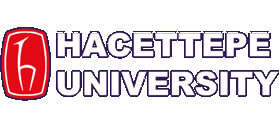| Obligation |
: |
Elective |
| Prerequisite courses |
: |
- |
| Concurrent courses |
: |
- |
| Delivery modes |
: |
Face-to-Face |
| Learning and teaching strategies |
: |
Lecture, Question and Answer, Problem Solving |
| Course objective |
: |
Basic objective of the course is to give idea on fundamental principles of electrical and electronics engineering , basic electrical circuits and systems concepts in simplified manner for the purpose of adapting students to their job education. |
| Learning outcomes |
: |
Have the ability of solving basic electrical circuits using proper techniques Learn basic electronic design principles Have basic information background on current electronical systems |
| Course content |
: |
Circuit variables, components, theorems Basic circuit fundamentals Analysis techniques Introduction to semiconductor components Diode applications Amplifiers Opamp applications A/D, D/A converter principles Memory designs Selected electronic systems |
| References |
: |
1.Reed, M.L., Rohrer, R. A. , Applied Introductory Circuit Analysis for Electrical and Computer Engineering with Principles Digital Design, Prentice Hall, 1999. ; ; 2. Boylestad, R.L., Nashelsky, L.Electronic Devices and Circuit Theory, Pearson Education, 2009. |
Course Outline Weekly
| Weeks |
Topics |
| 1 |
Circuit variables, components |
| 2 |
Ohm's law, Kirchhoff's laws |
| 3 |
Circuit analysis techniques and applications |
| 4 |
Circuit analysis techniques and applications |
| 5 |
AC circuits |
| 6 |
Midterm |
| 7 |
Transformators and ac circuits |
| 8 |
Introduction to semiconductor components, diodes |
| 9 |
Diode applications, clippers and clampers |
| 10 |
Transistors, amplifier principles, logic gates |
| 11 |
Opamp applications, oscillators, signal shaping circuits |
| 12 |
Midterm |
| 13 |
Selected electronic systems (Commmunication systems, control systems etc.) |
| 14 |
Selected electronic systems (Commmunication systems, control systems etc.) |
| 15 |
Preparation for Final exam |
| 16 |
Final Exam |
Matrix Of The Course Learning Outcomes Versus Program Outcomes
| Key learning outcomes |
Contribution level |
| 1 |
2 |
3 |
4 |
5 |
| 1. |
Possesses the theoretical and practical knowledge required in Electrical and Electronics Engineering discipline. | | | | | |
| 2. |
Utilizes his/her theoretical and practical knowledge in the fields of mathematics, science and electrical and electronics engineering towards finding engineering solutions. | | | | | |
| 3. |
Determines and defines a problem in electrical and electronics engineering, then models and solves it by applying the appropriate analytical or numerical methods. | | | | | |
| 4. |
Designs a system under realistic constraints using modern methods and tools. | | | | | |
| 5. |
Designs and performs an experiment, analyzes and interprets the results. | | | | | |
| 6. |
Possesses the necessary qualifications to carry out interdisciplinary work either individually or as a team member. | | | | | |
| 7. |
Accesses information, performs literature search, uses databases and other knowledge sources, follows developments in science and technology. | | | | | |
| 8. |
Performs project planning and time management, plans his/her career development. | | | | | |
| 9. |
Possesses an advanced level of expertise in computer hardware and software, is proficient in using information and communication technologies. | | | | | |
| 10. |
Is competent in oral or written communication; has advanced command of English. | | | | | |
| 11. |
Has an awareness of his/her professional, ethical and social responsibilities. | | | | | |
| 12. |
Has an awareness of the universal impacts and social consequences of engineering solutions and applications; is well-informed about modern-day problems. | | | | | |
| 13. |
Is innovative and inquisitive; has a high level of professional self-esteem. | | | | | |
